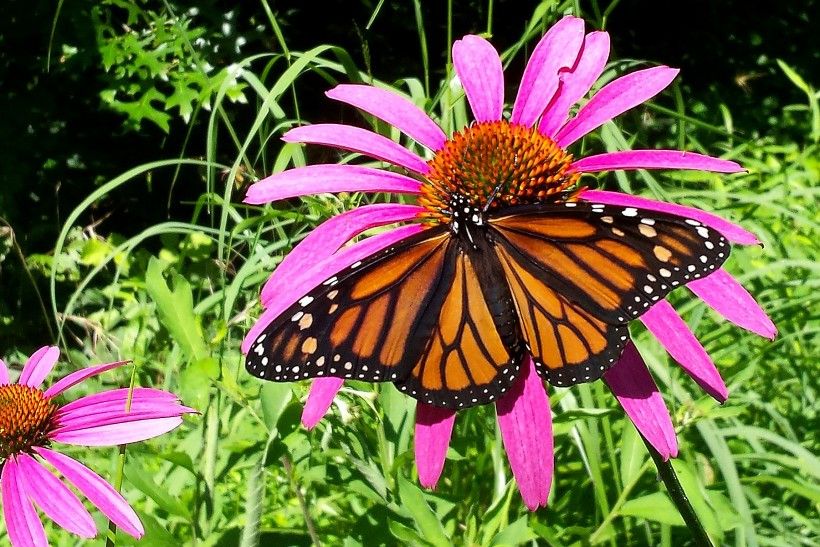
What’s Happening to the Monarch Butterfly?
The monarch butterfly migration is one of the most magnificent and intriguing of all natural phenomena. Monarchs migrate to Mexico each fall from the central and eastern United States and southern Canada to overwinter in the oyamel fir forests in mountains west of Mexico City. That is a more than 2,000 mile journey, flown by an insect weighing less than one-half of a gram. (By comparison, a penny weighs 2.5 grams.) In the 1990s, estimates of up to one billion monarchs made the epic flight each fall from the northern plains of the U.S. and Canada to Mexico, and more than one million monarchs from the western U.S. overwintered in forested groves on the California coast. Now, researchers and citizen scientists estimate that only about 56.5 million monarchs remain, representing a decline of more than 80% across North America.
Where Have All the Butterflies Gone?
The very existence of the eastern North American monarch migration is under immediate threat due to a number of causes: mining and illegal logging in Mexico are destroying the fir forests where the monarch overwinters; in the U.S., the loss of habitat due to development and land management practices are having widespread impacts; and in what may be the most damaging of all, chemically aided agriculture in the United States and Canada is killing both monarchs themselves and the host plants that are critical to their life cycle. Genetically modified seeds used in industrial agriculture, especially corn and soy, are engineered to withstand widespread application of the herbicide glyphosate (sold under several trade names, including Roundup), which is annihilating our native milkweed plants. This is catastrophic for monarchs, as they only lay their eggs on milkweed plants. Without milkweed, on which they lay their eggs and whose leaves exclusively feed their larvae (caterpillars), monarchs cannot survive.

How You Can Help
We can begin to reverse the tide and stop the decline of these incredibly complex and wondrous butterflies. Here are some tips on how you can help.
- Plant milkweed. There are three milkweed plants native to our region: common milkweed (Asclepias syriaca), butterfly weed (Asclepias tuberosa), and swamp milkweed (Asclepias incarnata). They are easy to grow and thrive in full sun, in a range of soil conditions. Learn more about milkweed
- Grow nectar plants. Adult butterflies need nectar for food. Some great native nectar-producing plants to grow in your backyard are: asters, black-eyed susan, coreopsis, goldenrods, Joe-pye weed, purple coneflower, smooth oxeye, and wild bergamot.
- Avoid herbicides and insecticides. Learn to love weeds in your lawn and forego weed killers. Avoid spraying pesticides whenever possible; pesticides kill good insects (like monarch caterpillars) as well as undesirable insects.
- Choose your food wisely. Buy organic and non-GMO as much as possible. Conventionally grown vegetables and grains, especially corn, require the use of many herbicides.
- Buffer your fields. If you have fields managed for hay production, create and maintain a buffer around the edges where milkweed and native nectar plants can grow. Learn more about mowing for monarchs